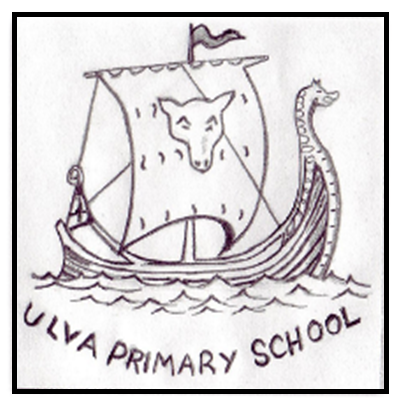Seaweed – Survey of Different Types at Shore School 04/09/24
The children used hula hoops to section off a piece of shore. Then used their hands to decide on how much area in the hoop was being covered by the different seaweeds. Each group did this twice and recorded what they found. They then took the record sheets back to school. We decided to create a pie chart and everyone helped to input the data and decide on the titles. On refection it would have been better to use percentages, rather than the amount of hands for the area, so it would be more easily interpreted by anyone who wasn’t part of the activity.
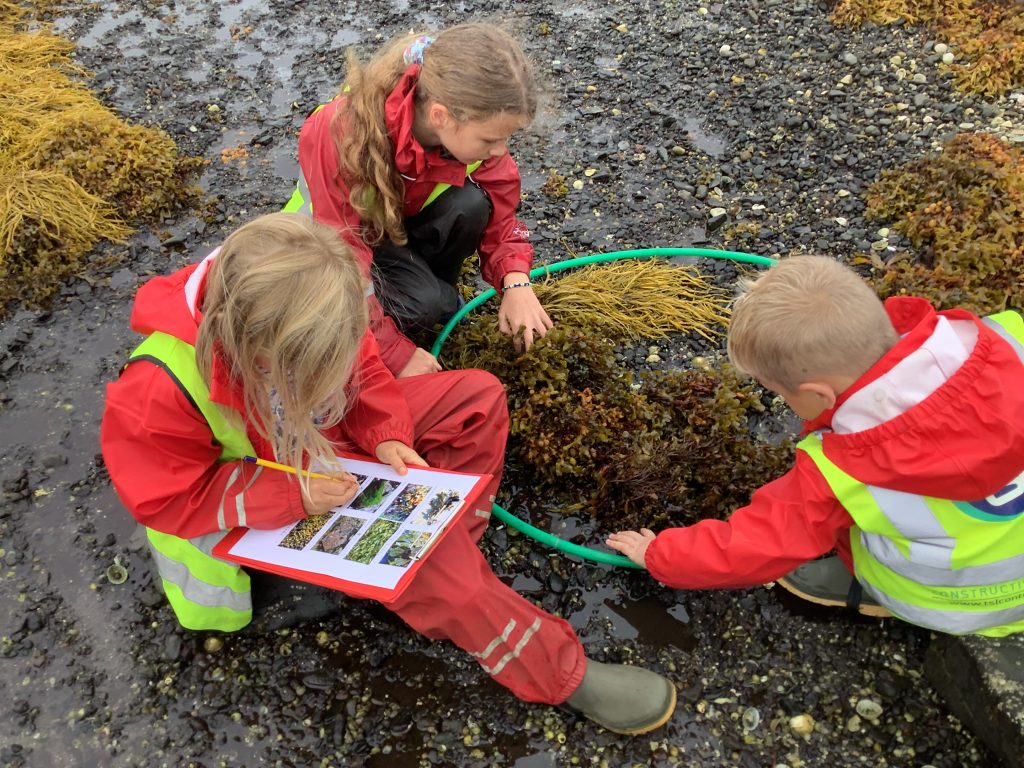
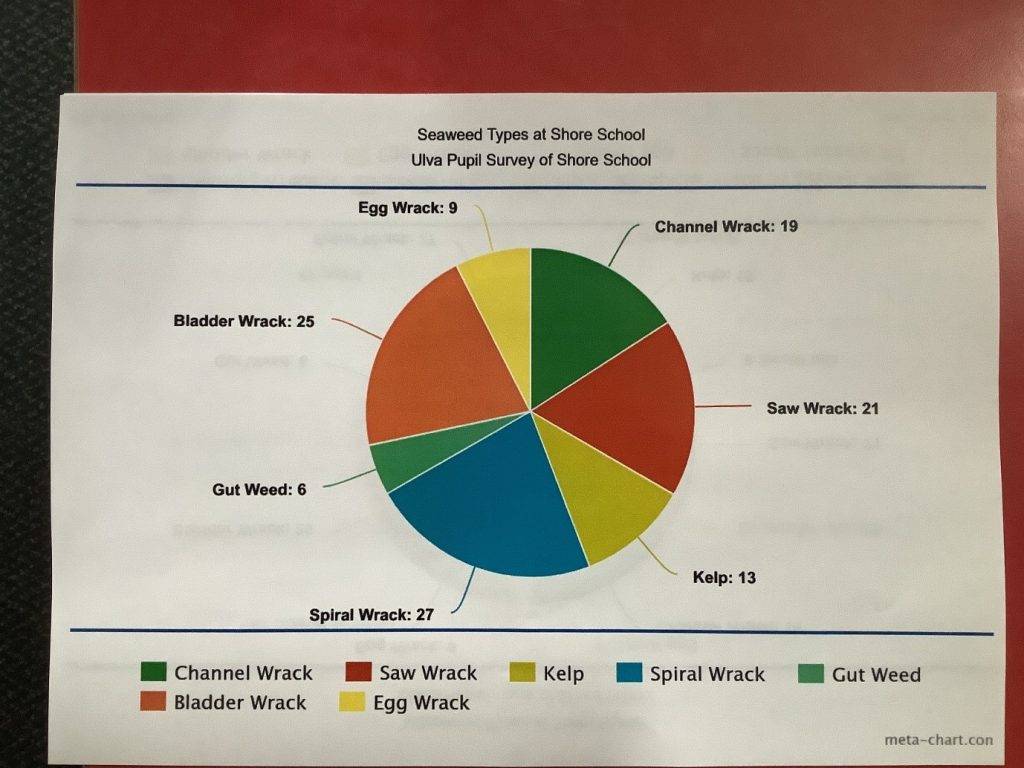
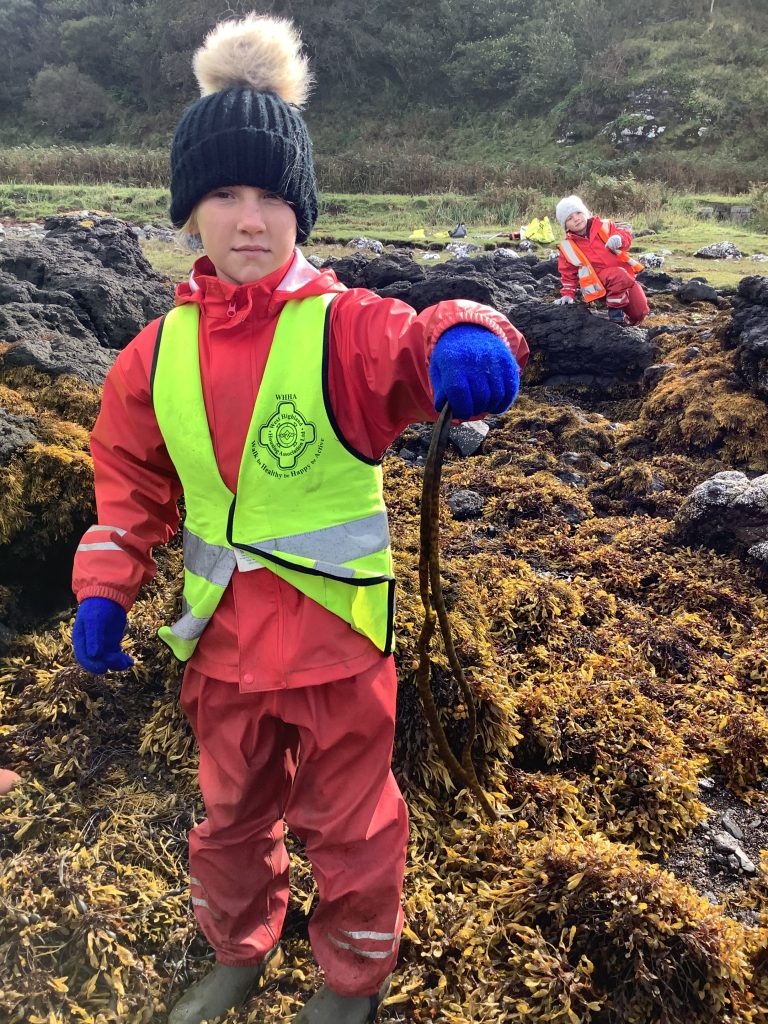
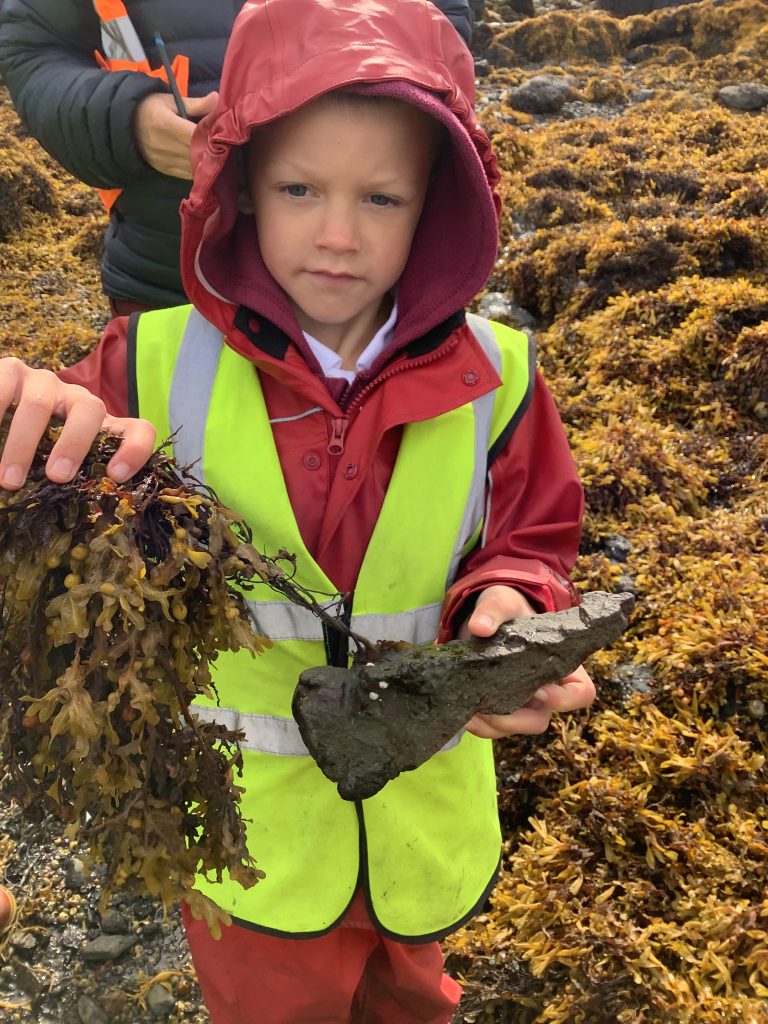
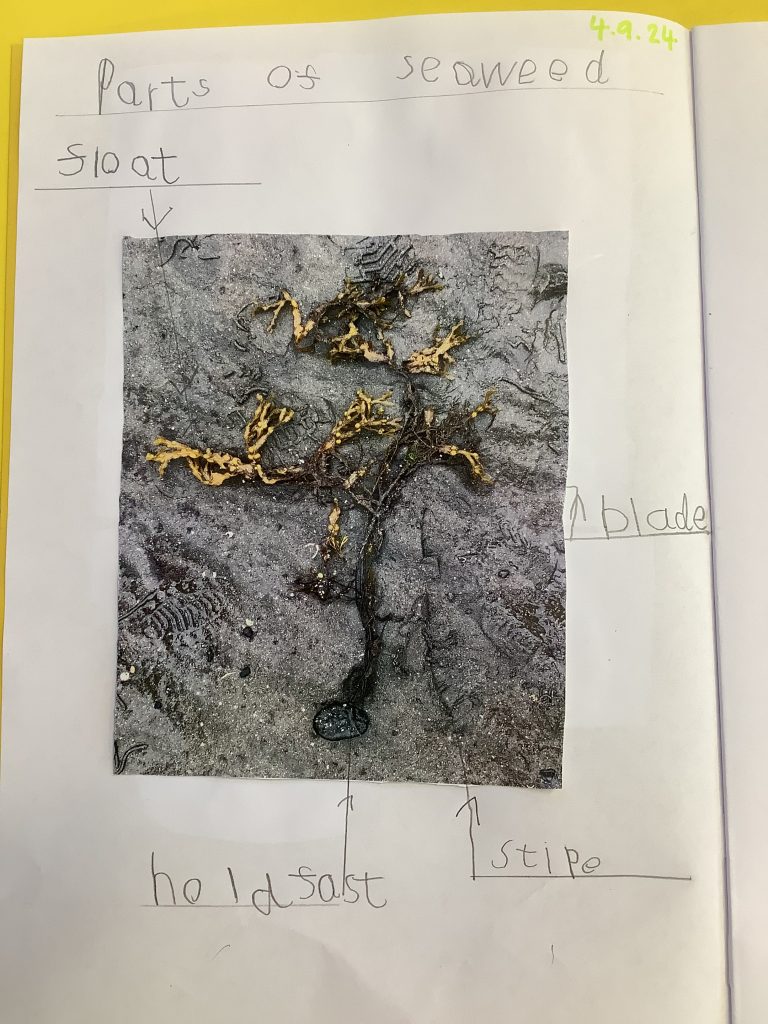
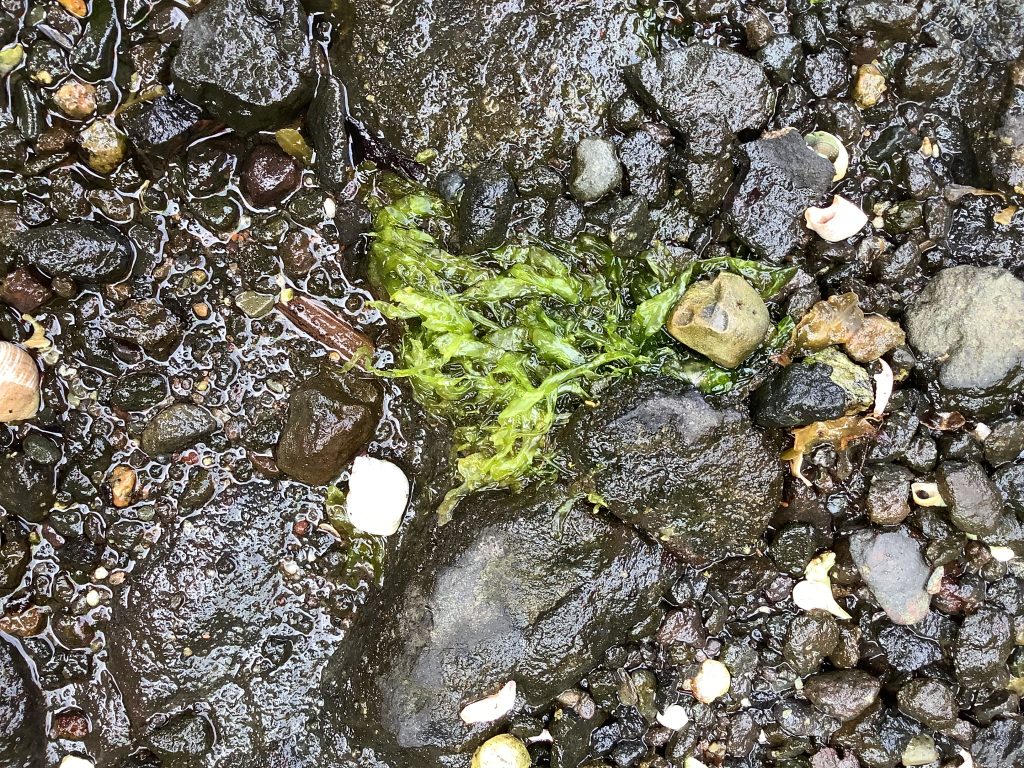
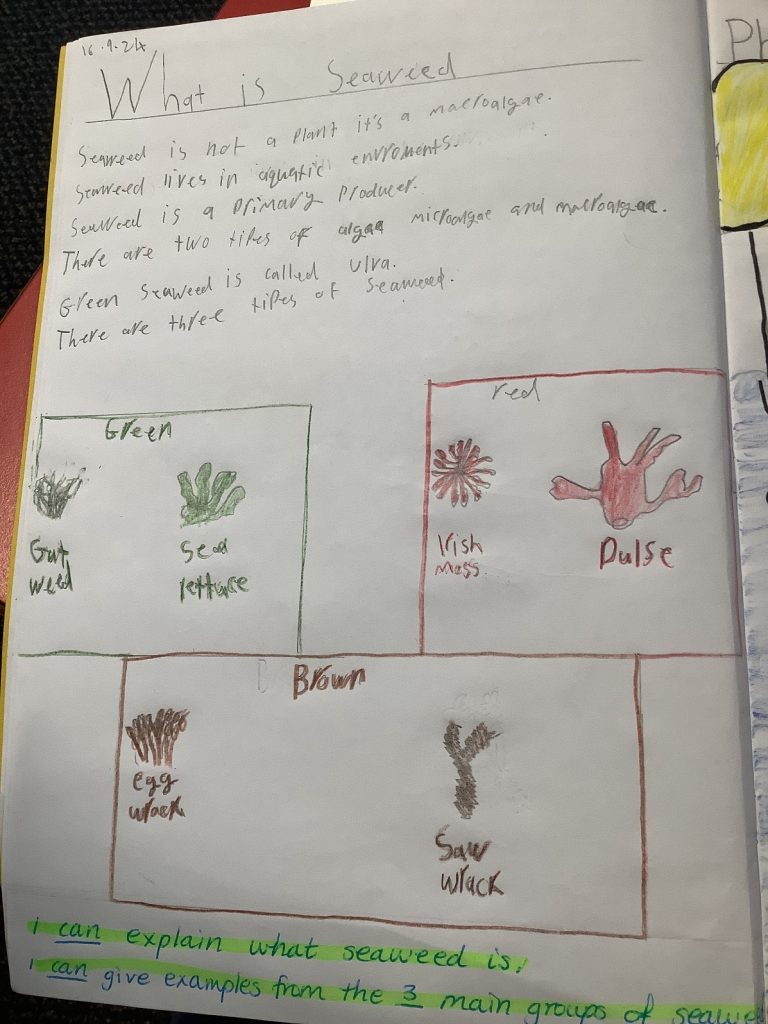
The children already understood that Seaweed was not a plant, when we covered the learning on parts of plants and parts of seaweed. We started with a video on what seaweed was, while watching the video the children made notes.
The children then created a topic jotter page about what seaweed was and the three groups it is split into.
Seaweed Samples and Identification. 27/08/24
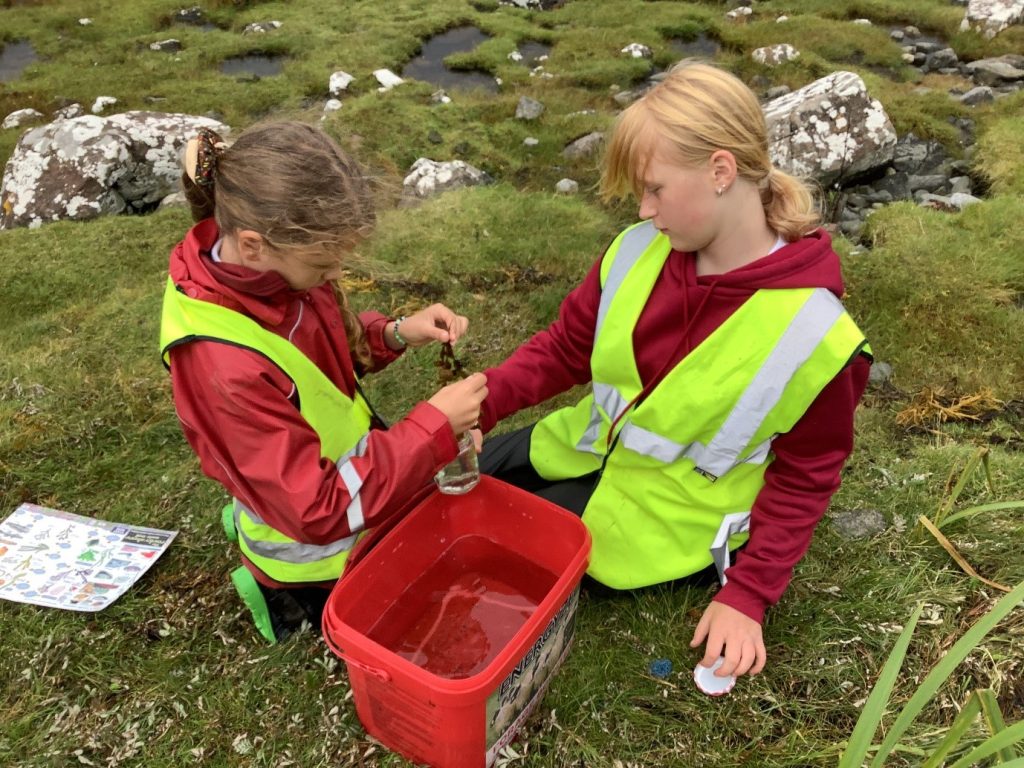
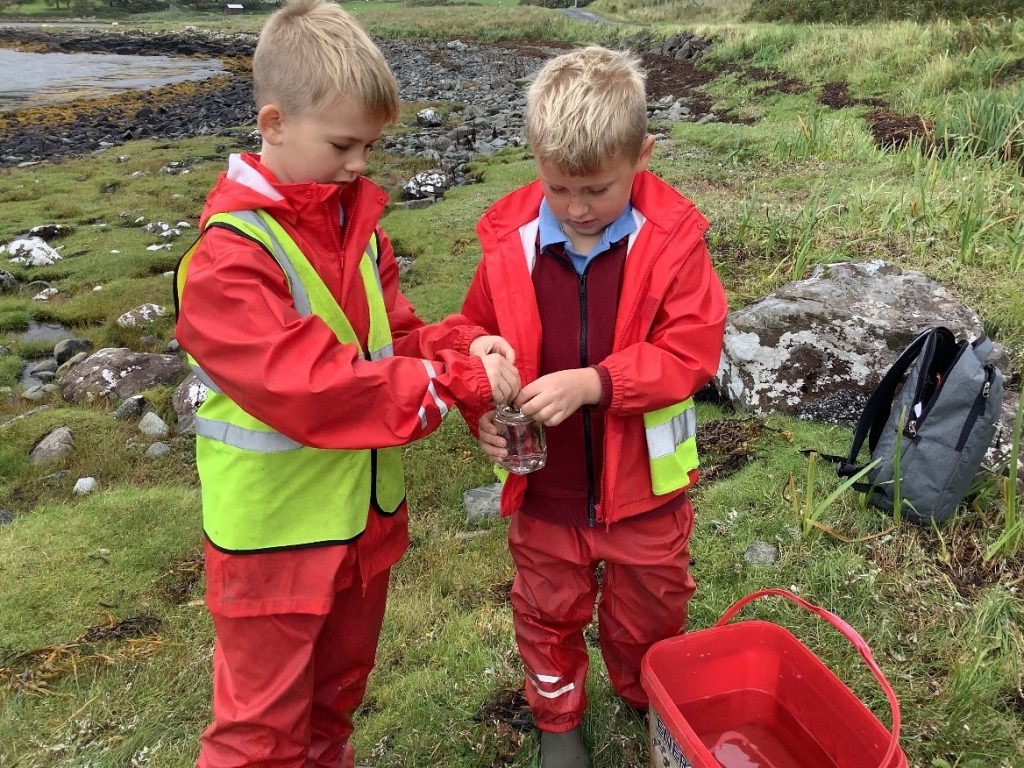
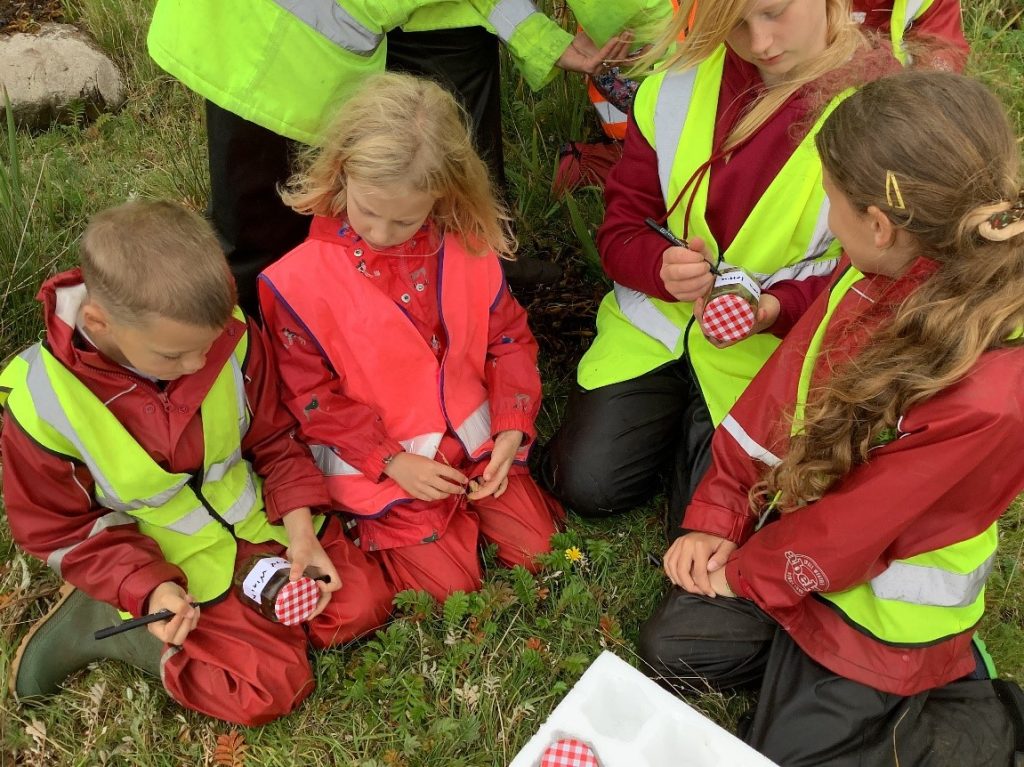
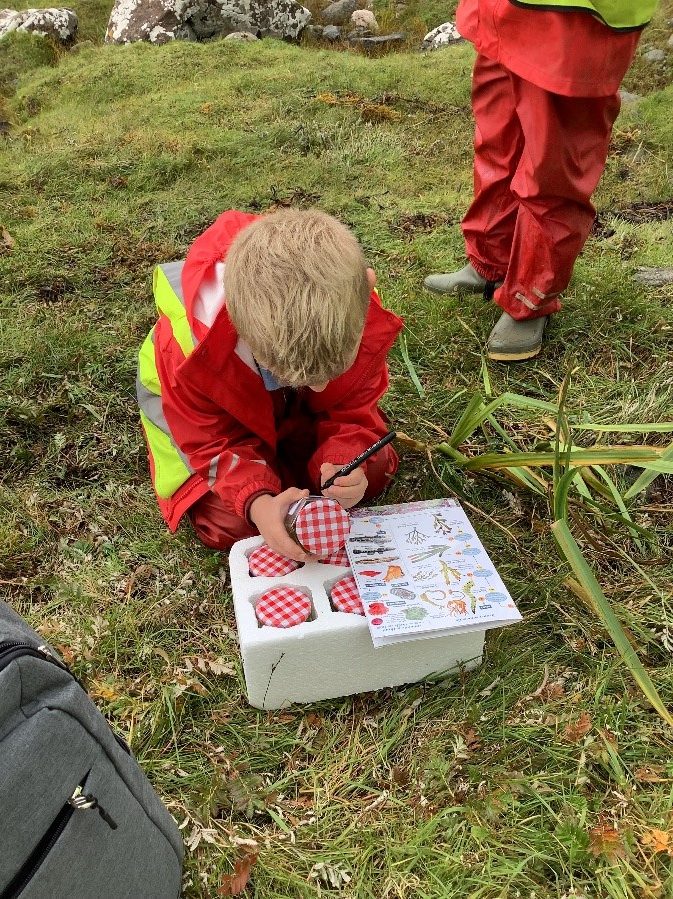
The children were split into pairs and asked to find specific examples of seaweeds using the identification chart.
Once they found it, they filled the jar with seawater, from a bucket we found in the ditch on the way to shore!
The children then took turns identifying the different seaweeds in the jars and labelled them with sticky labels and felt pens. The children were able to find and identify 9 different types of seaweed.
We then transported the jars back to school, initially to examine under the microscope and possibly other activities depending on what the children choose.
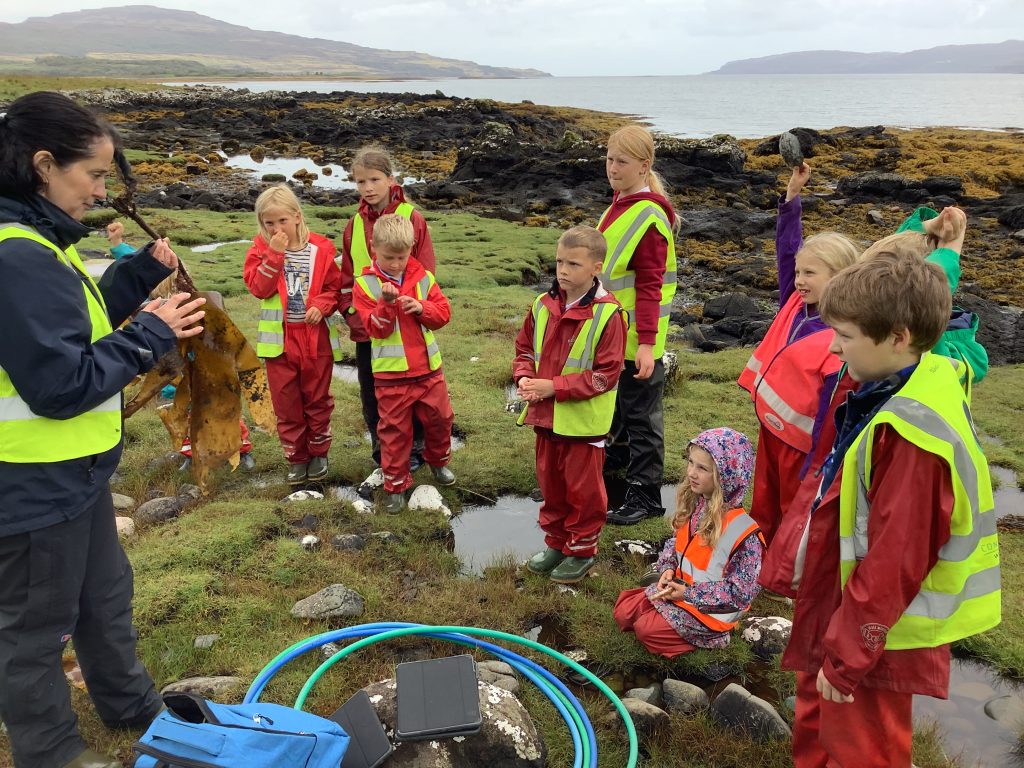
Seaweed – Photosynthesis in Seaweed. 24/09/24
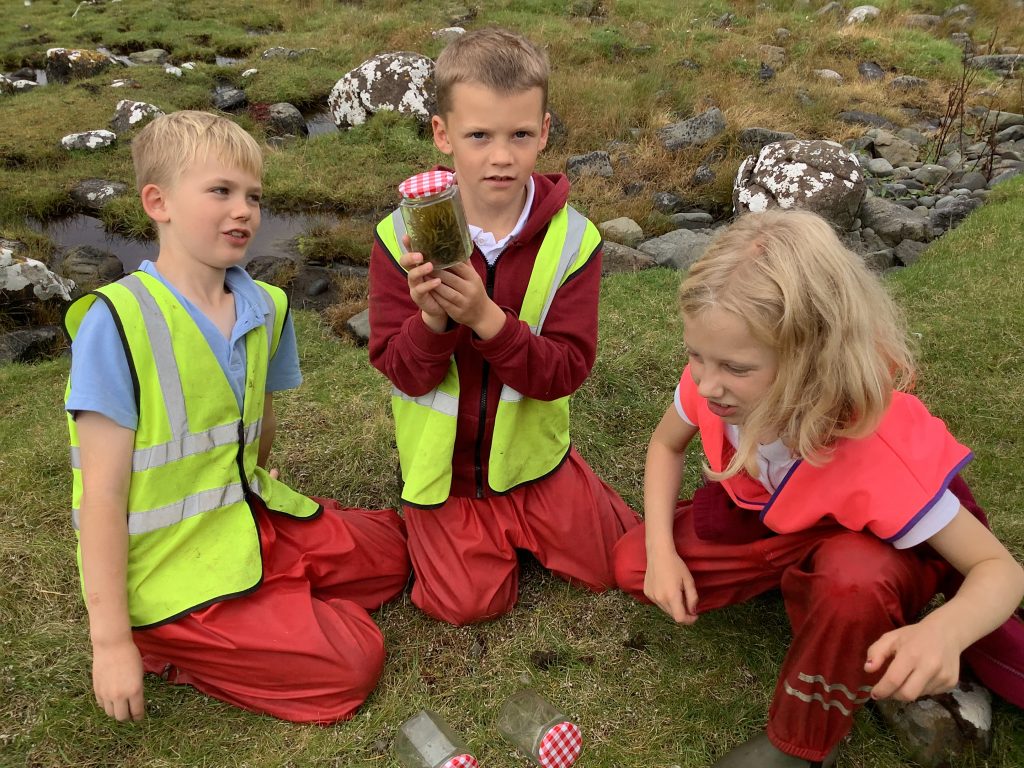
This learning started in the classroom before moving to Shore School. We explored the process of photosynthesis in seaweed and talked about the difference in plants. The key concepts were clear and the key language established.
The children were taken through the steps in the simple experiment and asked to suggest what they might see happening. It was great to hear that they thought bubbles would start forming because the seaweed would be producing oxygen.
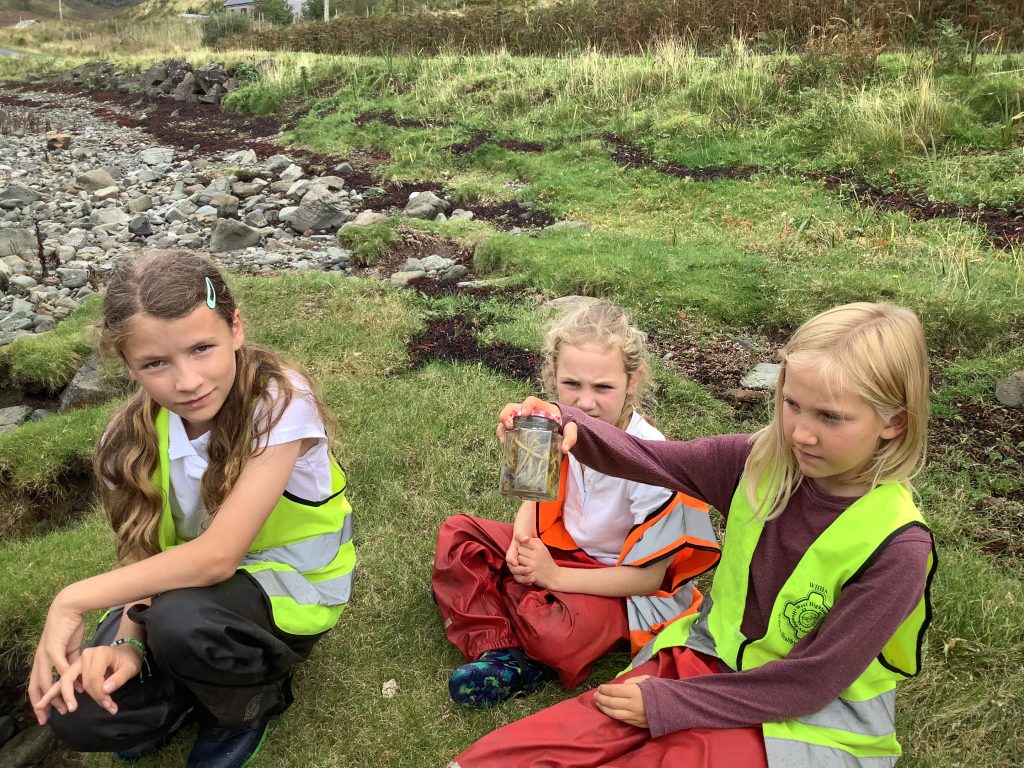
The children were allocated specific seaweeds to find, then worked in groups to collect it and put it in jars with sea water. They then turned them upside down and left them in the sun for 15 mins. After this time the spiral wrack jar had already produced some bubbles at the top.
While waiting for the jars to photosynthesise the children worked together to create a
diagram of the process using found materials. This has mixed results!!
Back in class the children created a wall display, created labelled diagrams in their jotters and wrote up the experiment in their writing jotters, using a formal layout.
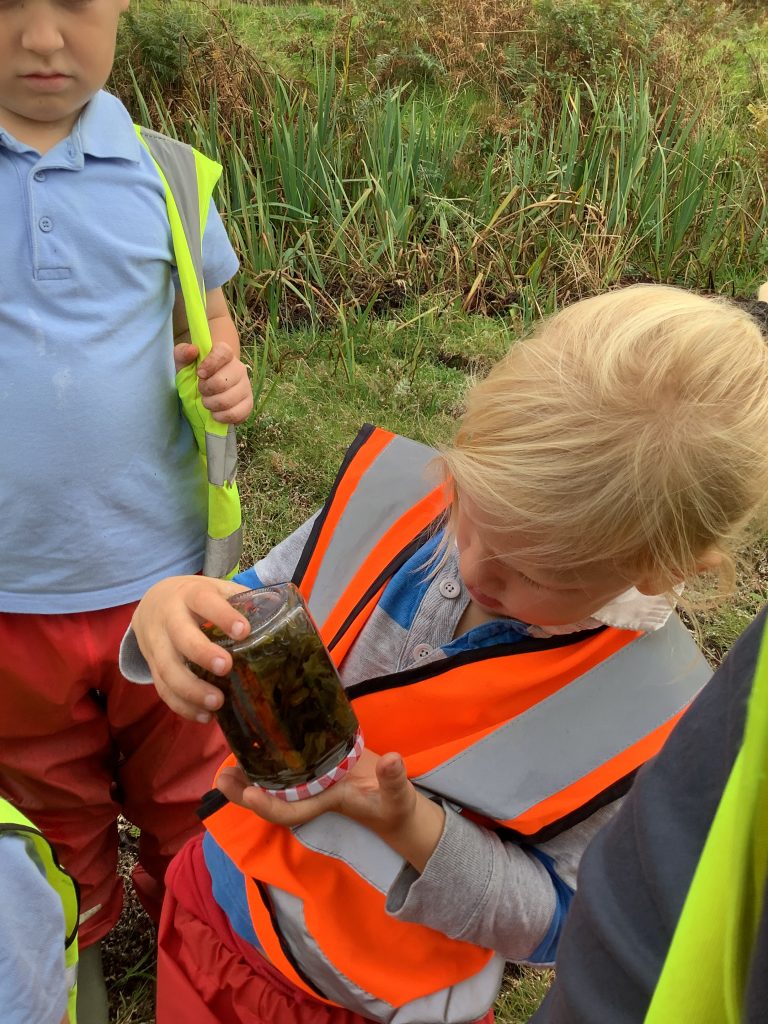
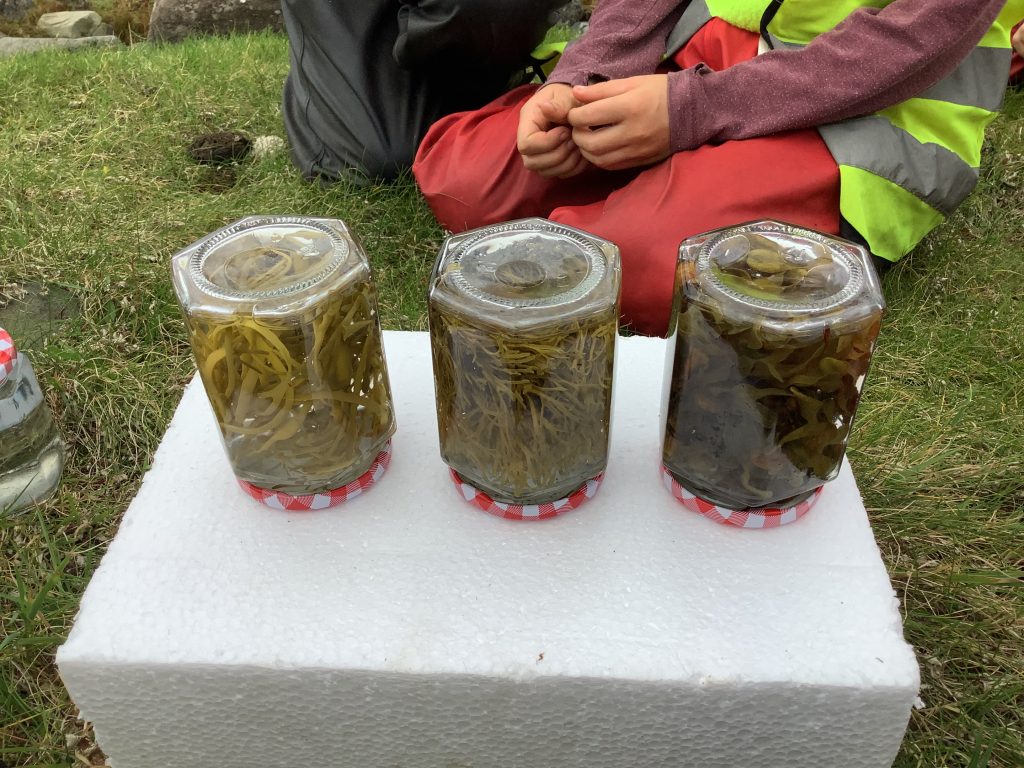
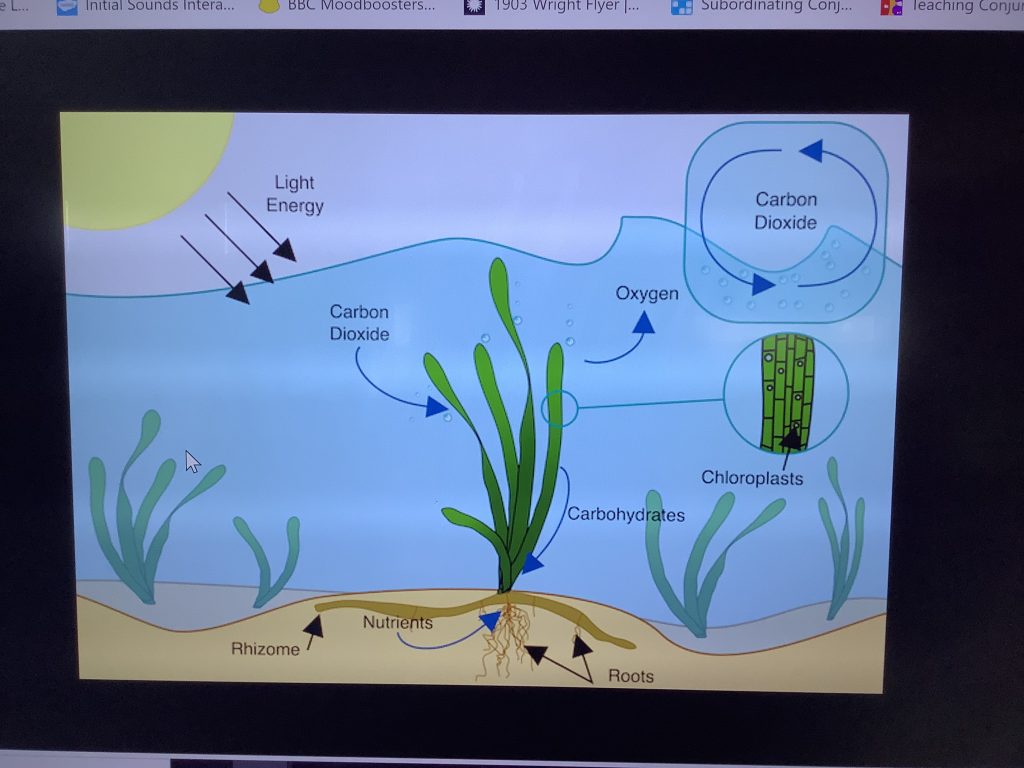
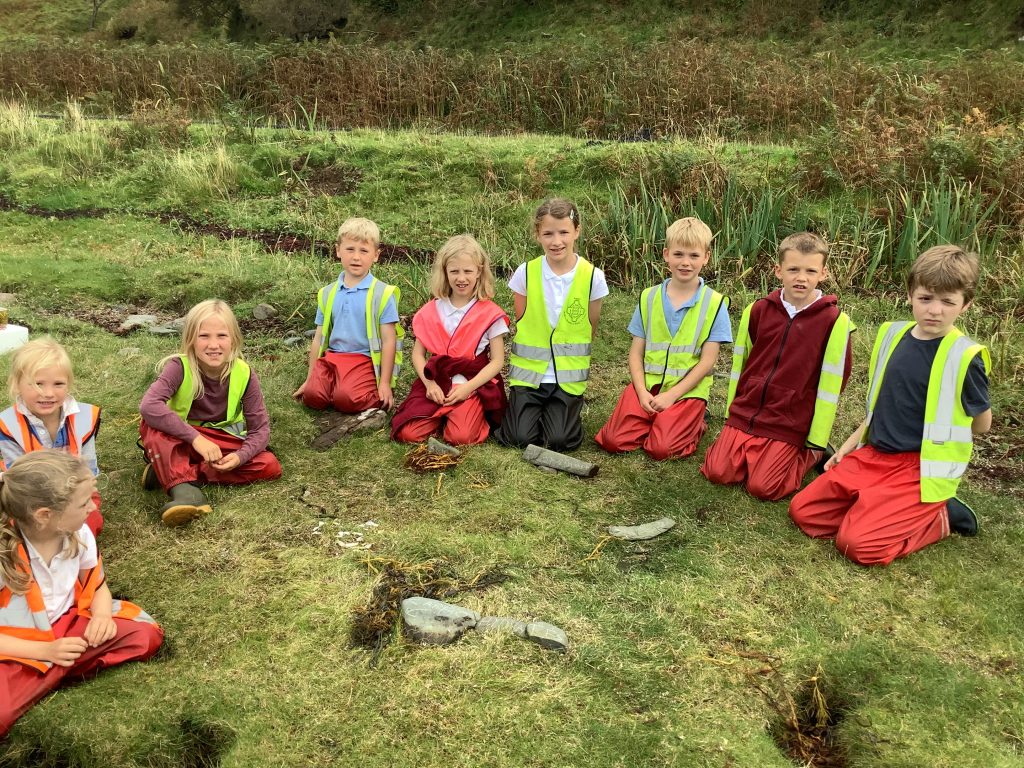
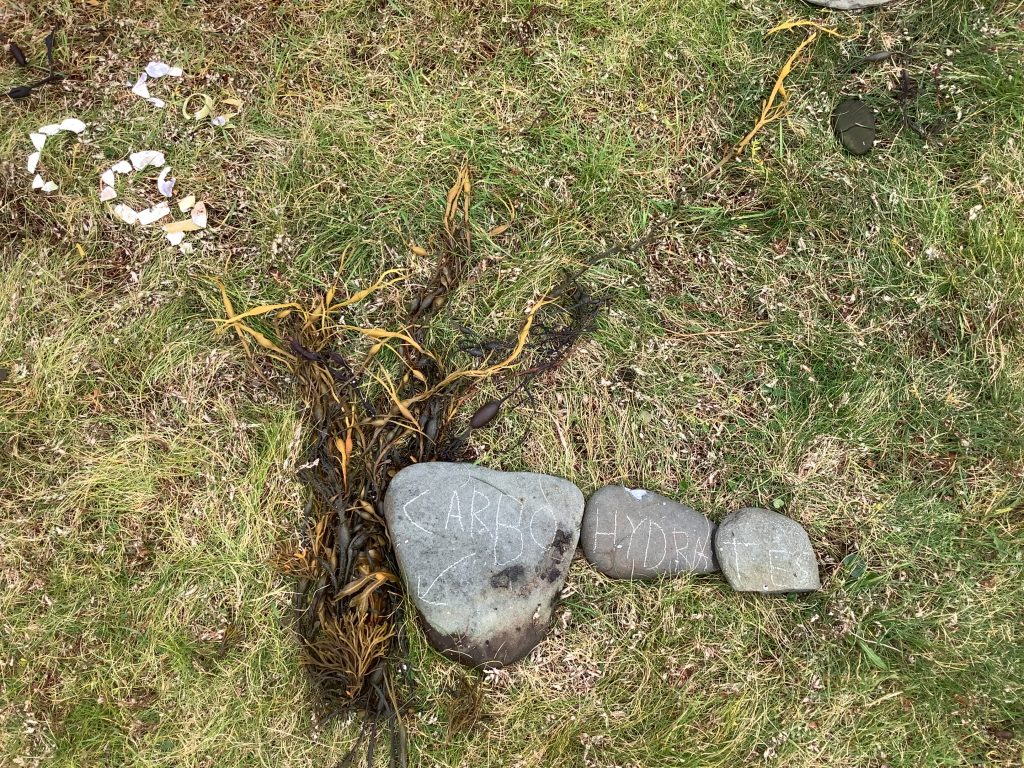
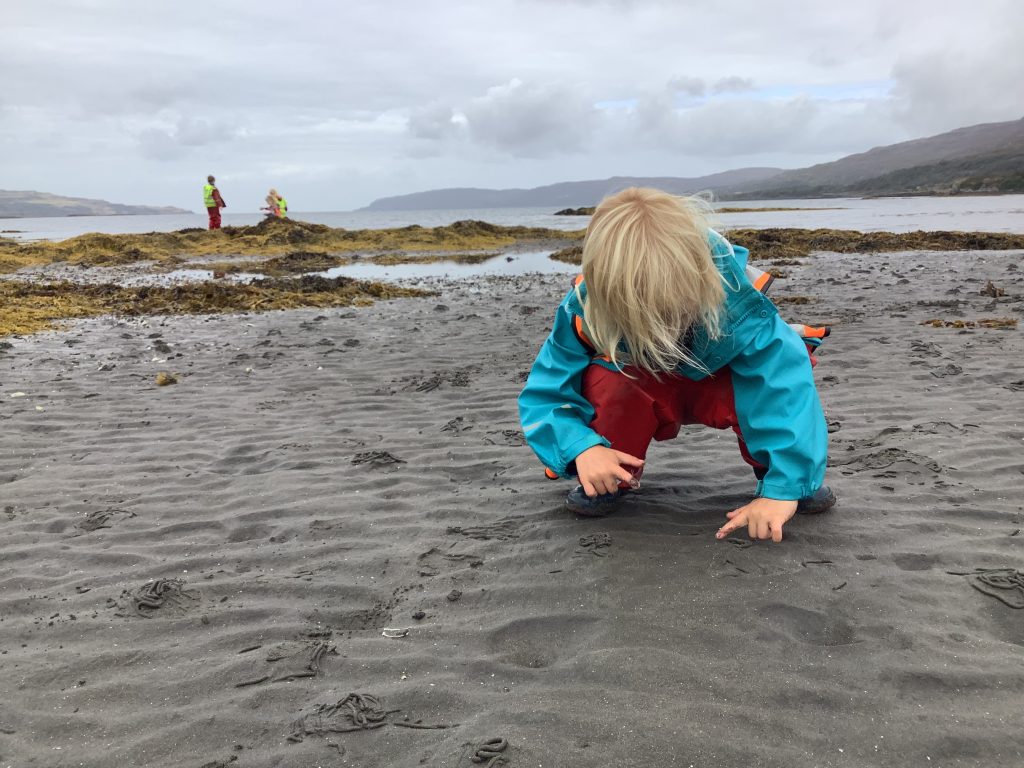
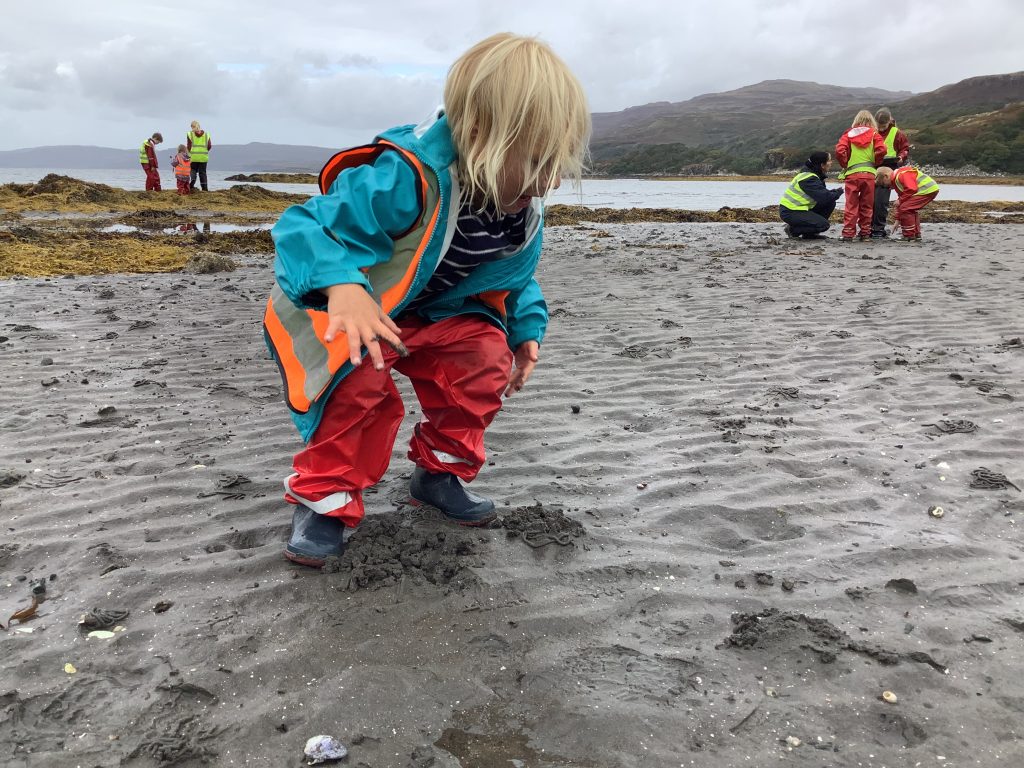
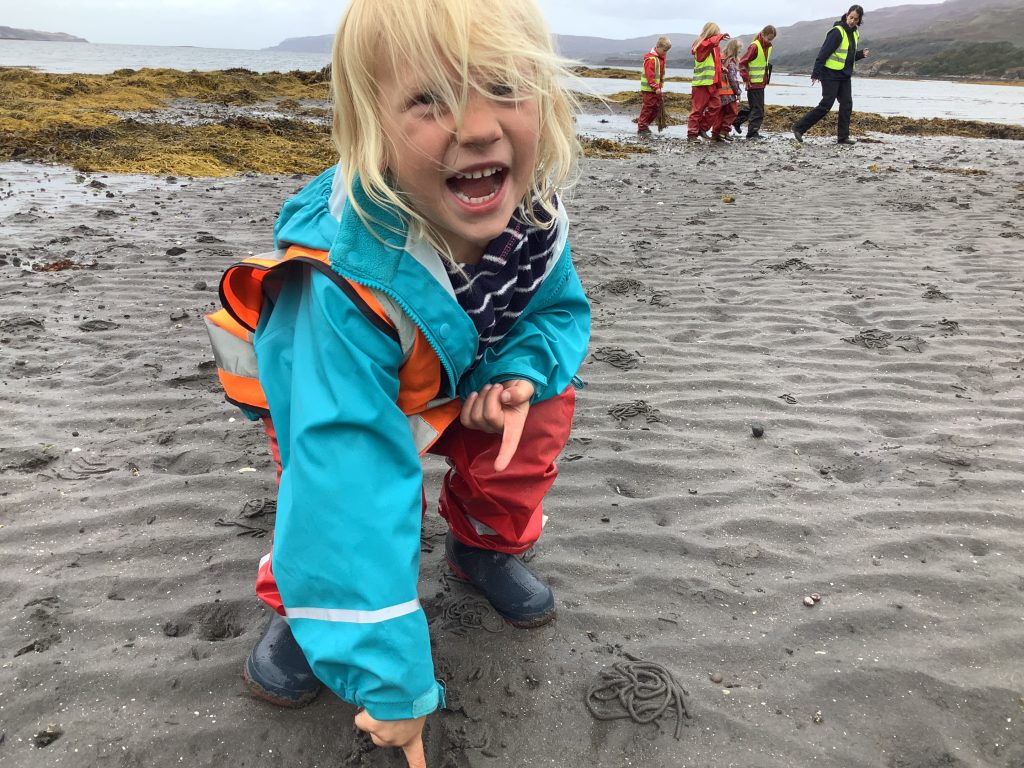
Seaweed – Studying Samples Under Magnification. 28/08/24
Today the children spend time working in pairs studying the different samples of seaweed under the digital microscope and a variety of magnifying glasses. They were able to choose which seaweed to look at closer the only instruction was to take it out the jar and place it on a white plate.
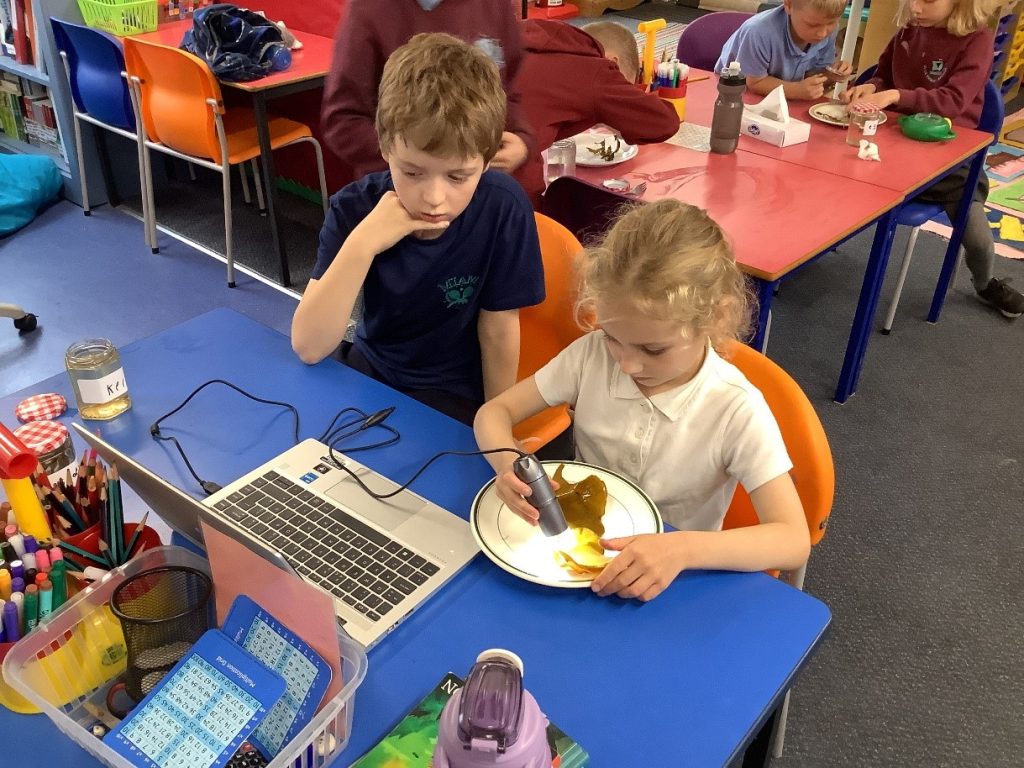
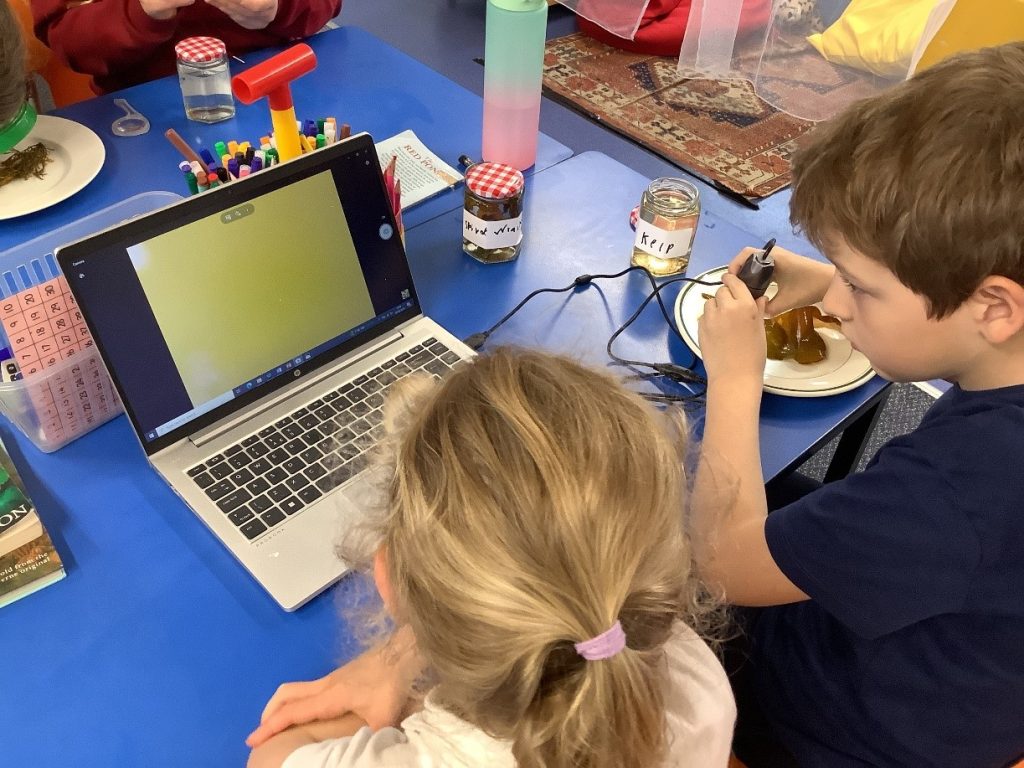
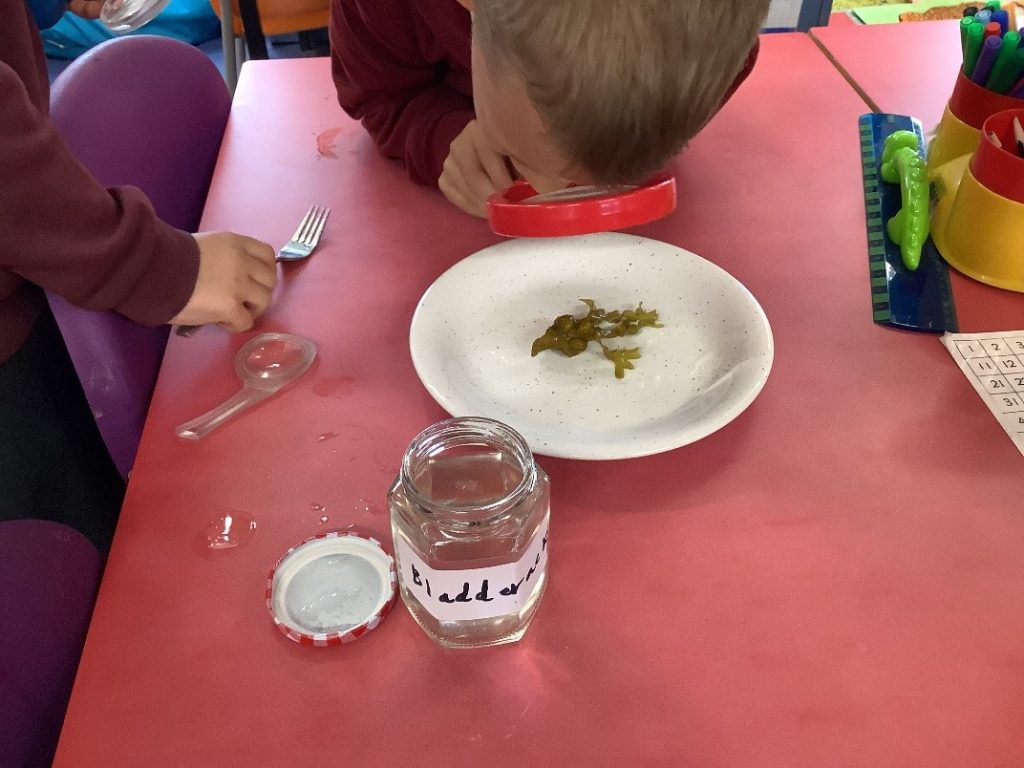
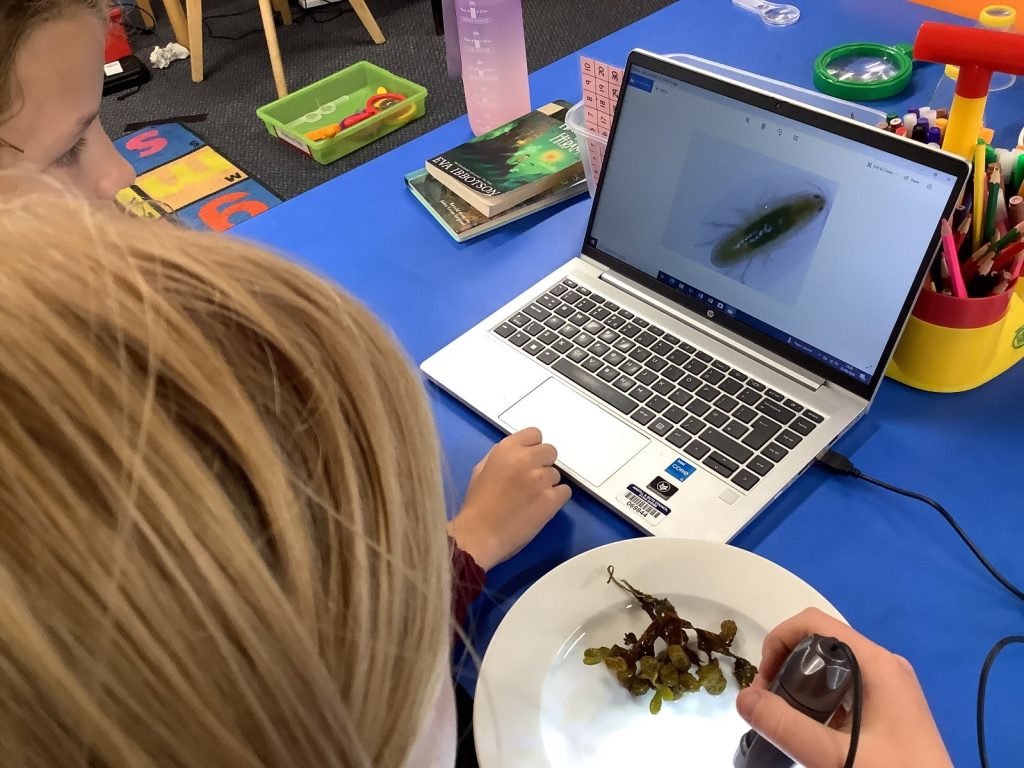
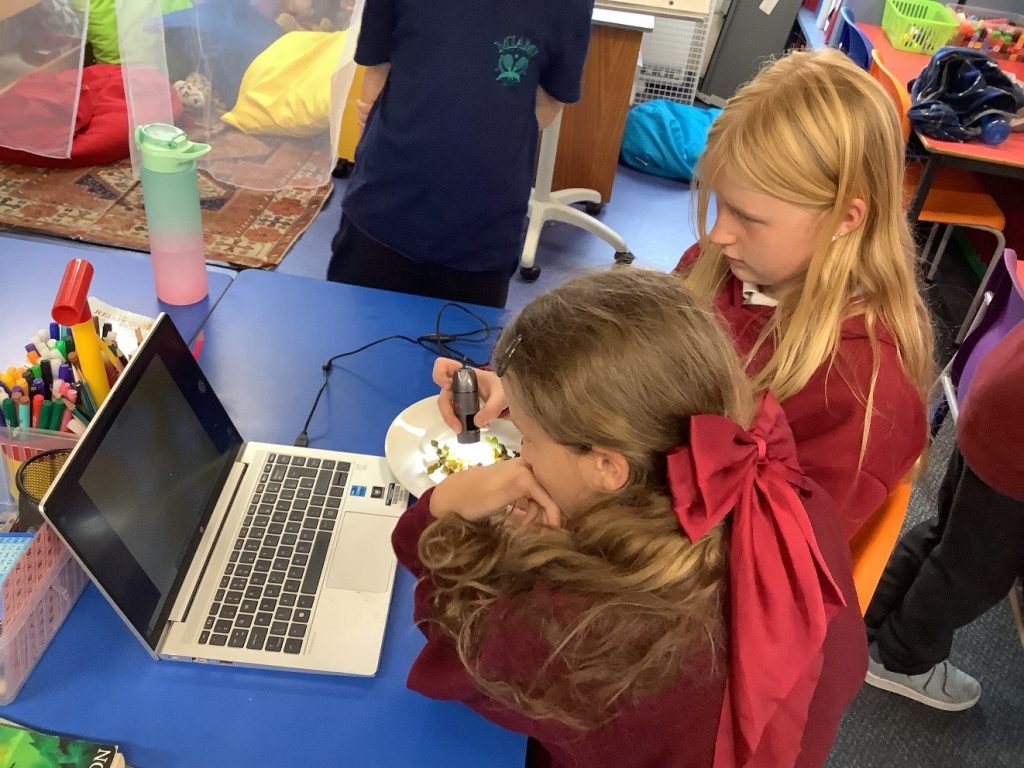
Seaweed – Dyeing Cotton at Shore School. 24/09/24
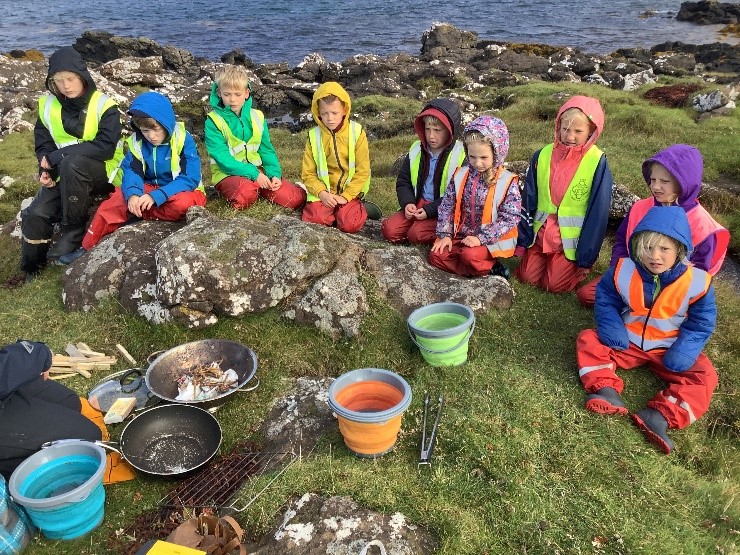
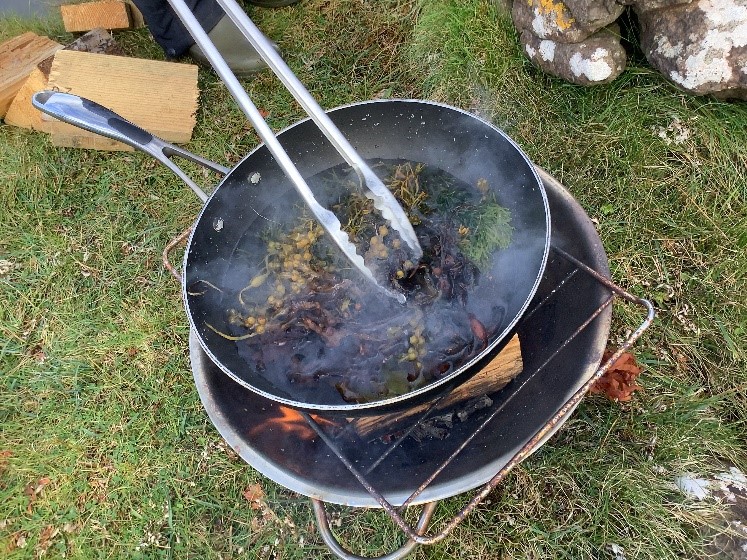
Today at Shore School we were attempting to use seaweed to dye some untreated cotton (calaco). We started by making a fire, we have done this previously at Shore School, so the children were very aware of the safety procedures. This was the first fire for P1 and P2 so our CA stayed besdie them the whole time.
Once the fire was going, we put salt water in the pan and waited for it to boil. I stayed with the pan, while the CA supervised the children gathering some seaweed to add to the pan. They gathered the seaweed based purely on the colouring, looking for something they thought would give a good colour to the cotton.

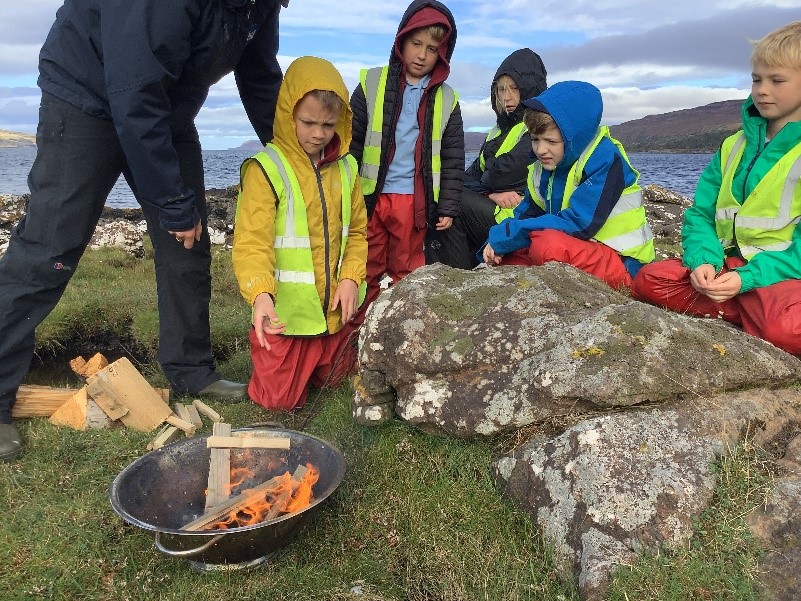
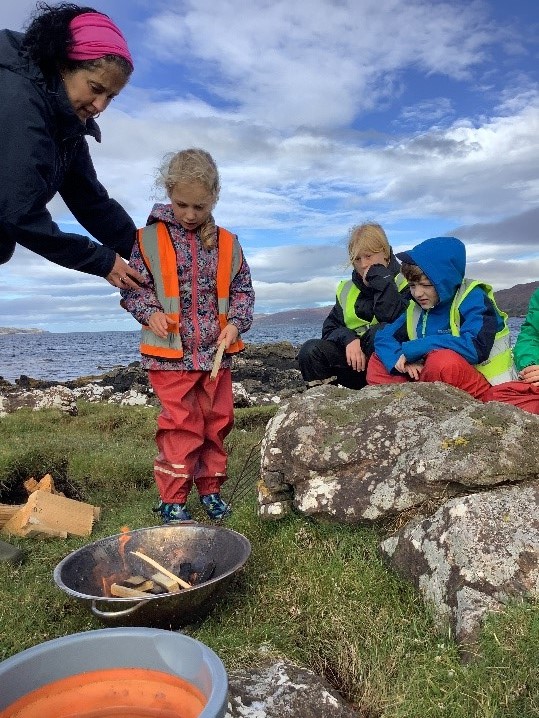
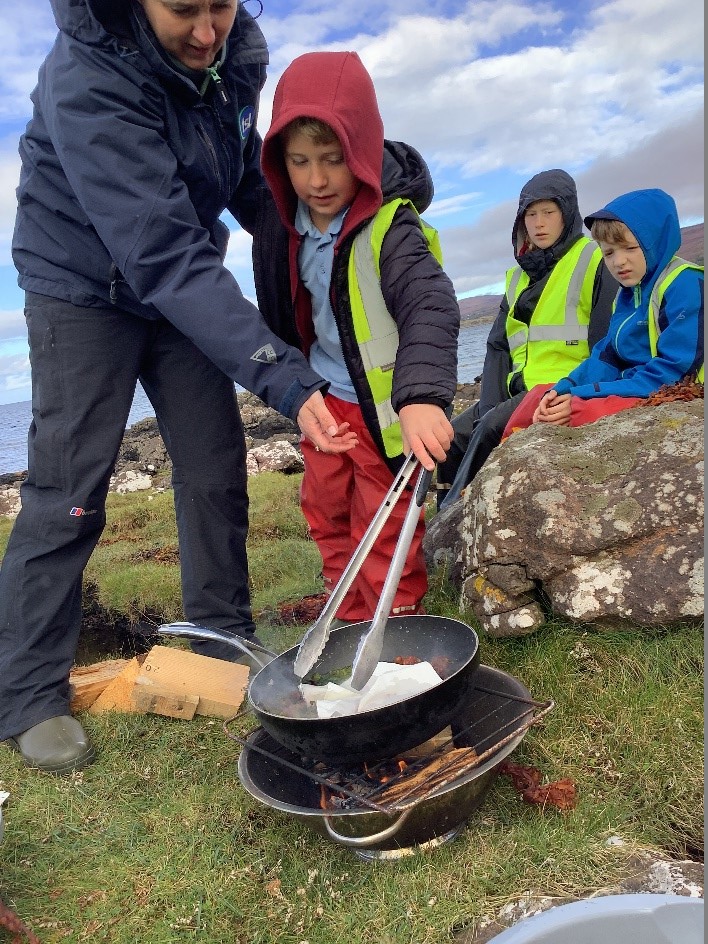
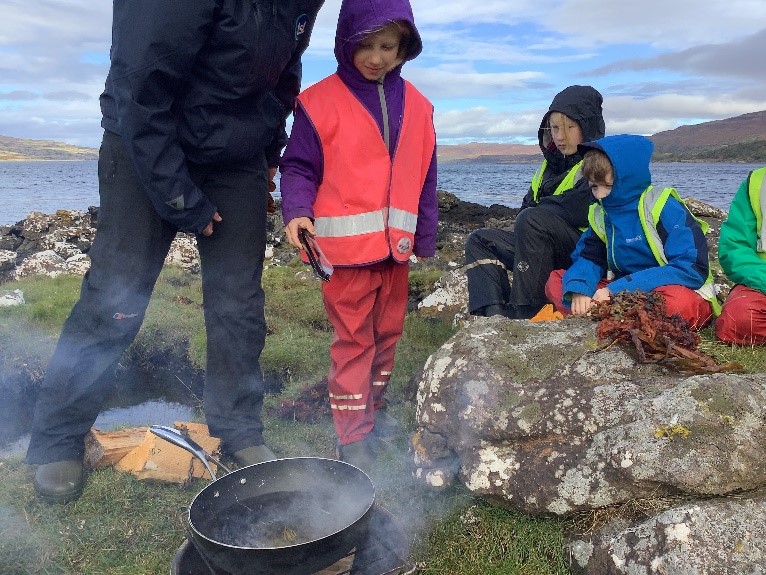
We then took turn added pieces of cotton into the pan and left it boiling with the lid on. When it came time to leave, there had not been much change to the cotton, however the water was changing colour. We decided to bring it back to school in a bucket and continued boiling it on the hob in the kitchen.
Once the mixture had cool we poured it into a bucket and the children used tongs to pick out the fabric. I then rinsed it and it is currently hanging out to dry. We did manage a change in colour, however it is possibly not the most attractive shade of brown. The children and I will now decide what to do with the fabric.
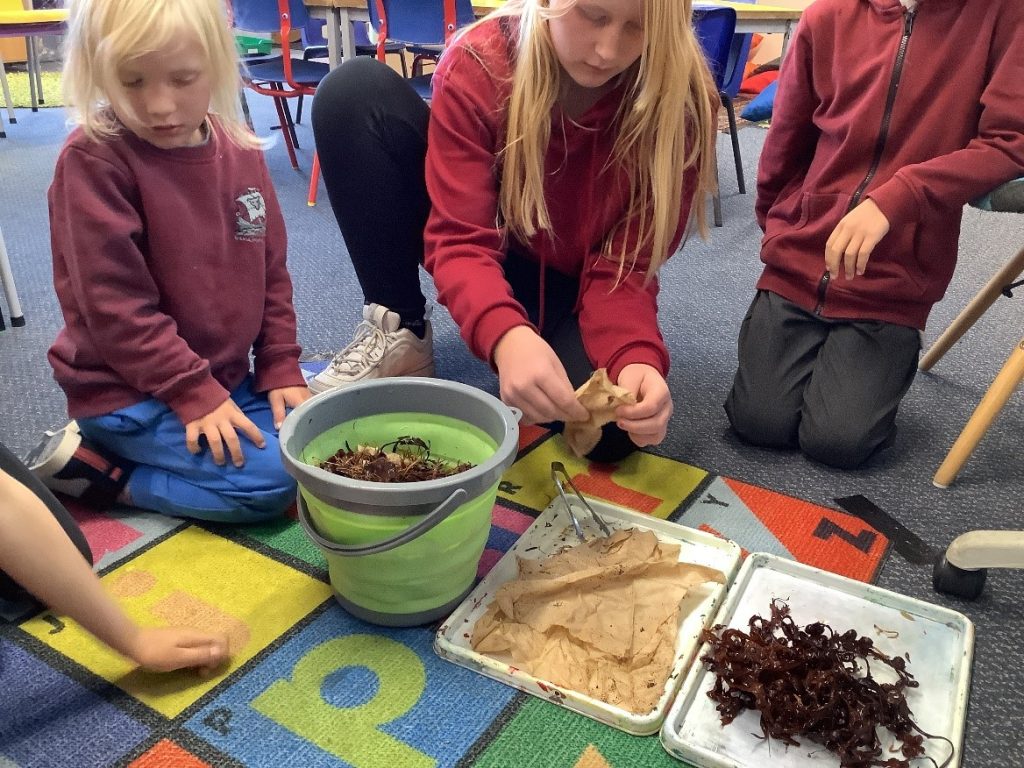
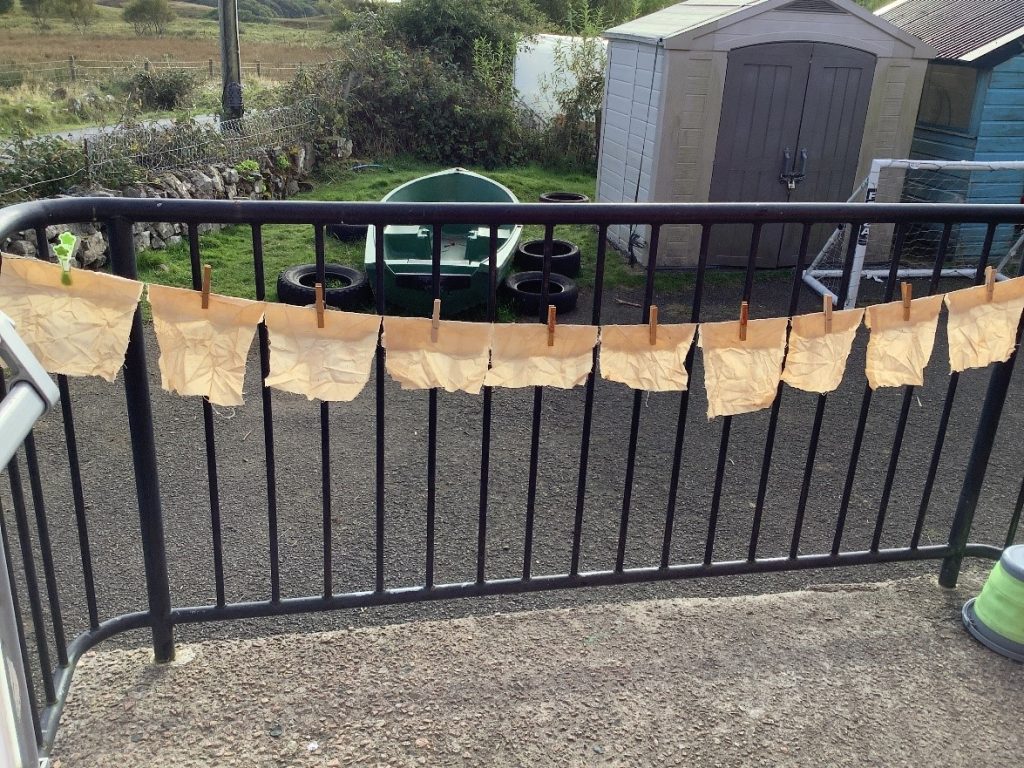
The UN Convention on the Rights of the Children.
Article 24 (health and health services)
Every child has the right to the best
possible health. Governments must
provide good quality health care, clean
water, nutritious food, and a clean
environment and education on health
and well-being so that children can stay
healthy. Richer countries must help poorer
countries achieve this.
Article 42 (knowledge of rights)
Governments must actively work to
make sure children and adults know
about the Convention.
